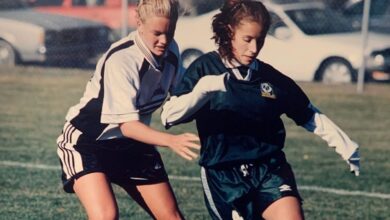Fancystats: A beginner’s guide to rejecting what you think you know and embracing hockey analytics
 Supplied
SuppliedIt’s time to accept that (nearly) everything you know about hockey — the traditional, conventional wisdom spewed between periods about heart, hustle, and going up and down the wing and giving it 110 per cent — is all a bunch of pointless crap. No matter how much you think you understand the game, how high of a level you played at back in your glory days, or how many different hot takes you’ve listened to on the radio or read in a Hockey News magazine, the best and most efficient way to objectively understand the value brought to the ice by different players is through analyzing at a collection of underlying statistics.
The NHL, and the sport of hockey in general, is changing. All sports are. We now have the resources and technology available to track and sort information on games and players that nobody would have dreamed possible even a few decades ago. Organizations are jumping through hoops, climbing steep mountains, and throwing money all over the place to figure out a way to gain a competitive edge on their opponents.
Baseball was the first sport to smash its head through this wall. If you’ve ever read Moneyball by Michael Lewis, or watched its film adaptation, you’ll know that Billy Beane, the General Manager of the Oakland Athletics, rejected conventional baseball wisdom because he was the victim of it. He was a tremendously talented athlete who was talked into leaving a scholarship from Stanford on the table to sign with the New York Mets as an 18-year old. Unfortunately for everybody involved, the scout that pegged him as the next Hank Aaron got it all wrong. Decades later, Beane has been destroying classical baseball knowledge down from the inside, opting to view players objectively and looking at the process of their accomplishments rather than their results.
That’s what we’re trying to do now with hockey, and as expected, it’s being met with mixed reviews. Players, coaches, members of mainstream media, and fans alike have a hard time grasping the idea that a player with a 40 corsi for percentage at even strength is getting eaten alive when game in, game out, they have the pleasure of watching them throw hits, dump and chase effectively, and win face-offs. Because those are all things we’ve been conditioned to accept as meaningful elements of a successful hockey player.
I mean, Corsi, Fenwick, PDO, WIWY, Zone Starts, and all that are just random terms. You can’t quantify what it takes to win a hockey game with a single number and there are endless amounts of intangibles that go into making a good player.
That might be true, but we can break down what winning a hockey game is into its simplest terms and go from there. Winning a hockey game comes down to scoring more goals than your opponent. In order to do that, you more than likely need to have more scoring chances than your opponent, and if you don’t, you’ll need to either rely on your goaltender being amazing, or your opponent’s goaltender being, well, not amazing. Let’s start from there.
Corsi and Fenwick: The Power of Meaningful Possession
The first thing to understand with hockey analytics is possession numbers. If you’re sitting at a bar and somebody says to you “Pavel Datsyuk isn’t all that good a player,” you can interrupt them, put your hand in their face, and say “well, no, his possession numbers…” and then trail off, have a sip of your drink and smile because you’ll have won the argument.
When you hear the term possession, you’ll probably immediately think of the time in which one team has the puck under their possession. That’s right, almost. We don’t just sit there with a stopwatch and time how long the Detroit Red Wings have the puck on their stick, we use Corsi and Fenwick events, or shot attempts, to figure it out.
Corsi is simply a shot attempt. Nothing more, nothing less. So whenever a player skates over the blue line and fires a puck towards the net he gets one corsi point. Fenwick moves a step further and tracks unblocked shot attempts because they better represent what was actually a scoring chance. So what we’re doing here with these stats is determining that the team who has the most corsi events, or the most shot attempts, is generating more meaningful possession than the opposing team. The face-off win, the board battle, the chip past the defenceman, the pass in the neutral zone — all of that represents meaningful possession, and generally, aside from the occasional outlier, all of it leads to a (shot attempt) Corsi or a Fenwick event.
Possession stats can be applied in a variety of different ways depending on what you want to look at. In a team setting, you can look at how a team performs in possession to get an idea of how well they played. If the Oilers have a corsi for percentage of 37.4 (this happens a lot) then they were eaten alive. Over time, sample sizes grow and we can start to make legitimate conclusions about which teams are performing well and which ones aren’t.
With or Without You: Breaking Possession Down
When looking at a player’s possession numbers, we can make it more advanced and break it down a little further. First, there’s a player’s individual possession numbers. Joe Thornton generated nine individual shot attempts. That’s a pretty good game, right? Well, was it because of his work? Who was it against? Did he make the rest of the team better?
Those are all questions we can answer using these lovely new statistics. The most common possession number you’ll see attributed to a player is their corsi for or fenwick for percentage. This doesn’t represent their individual shot attempts, but the shot attempts generated by the team when they were on the ice divided by the total number of shot attempts by both teams. So if Thornton has a 60.0 corsi for percentage, it means his team generated 60 shot attempts while the other team generated 40. That way, the work he does in helping another player generate a shot attempt isn’t completely lost and ignored in the numbers. I won’t go into too much detail, but from here, we can start comparing a player’s corsi numbers when they play against different players, when they play with different linemates, at different points of the game, and when they start in different zones.
The possession stat can be manipulated to show to what extent a player is helping his team generate chances to score, and by osmosis, helping his team win. If a player does a lot of good, hard work but it doesn’t lead to a shot attempt, does it really matter? Scoring is the point of the game, so if you aren’t creating those chances, you don’t really have value to your team.
PDO: The Luck Stat
After that, the next important thing to recognize is PDO.
Remember earlier when I said if a team doesn’t generate more scoring opportunities than their opponent, they would need to rely on either their goalie being good or the other goalie being bad to win? That’s what PDO seeks out.
Also known as SPSV%, PDO is essentially the luck stat. This is what we use to apply to a team like the 2013-14 Colorado Avalanche or 2014-15 Calgary Flames to determine that they were full of shit. A team with bad possession numbers but a high PDO is getting by on either a very high shooting percentage or a very high save percentage at even strength. That’s all this stat is. An addition of even strength save and shooting percentage that ends up somewhere around 100. There’s a good chance that if you PDO is above 102, you’re going to crash down to earth, and if your PDO is below 98, you’re a good candidate to pull it together and bounce back.
Obviously some teams have horrible goaltending and some have excellent goaltending, so there are always going to be outliers, but if a team is at the basement of the league in possession and at the top in PDO, something’s going to have to give because hot goalies and snipers cool down eventually.
So with possession numbers and luck stats you have the basis of how to understand the surface of hockey analytics. There’s a lot more to dig into (like why plus minus is stupid, why things are best analyzed at even strength, how to adjust for score and situation) but I can’t keep rambling on forever, so I’ll leave it at that for now.
There’s a ways to go with this whole thing and it’s far from perfect, but that’s part of what makes fancystats so fun. Hockey analytics is in its infancy, and a lot of really smart and interesting people are working hard to push it forward, so getting involved in the discussion now is an exciting opportunity for anybody who’s interested in the growth of the game. There are blogs all over the internet dedicated to tracking and analyzing stats and figuring how to better understand what players can bring to the table (or ice) that people overlook for a variety of different reasons, and slowly but surely, it’s being embraced by mainstream media and professional organizations.
Just remember to be open to new ideas, and be ready to toss what you know out the window. Because no matter how much you think you know about the game, there’s bound to be something that you missed.




